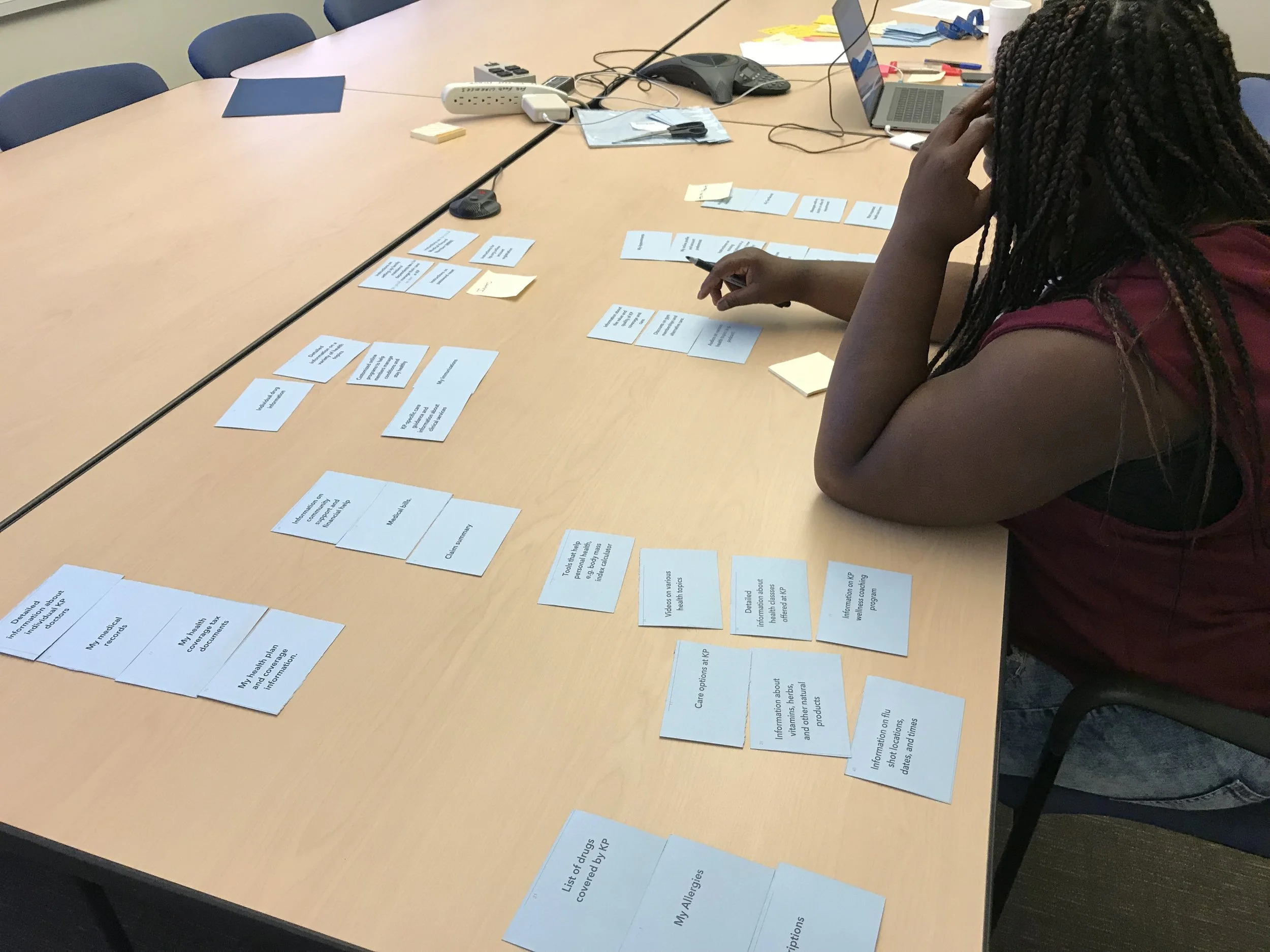
Research for Search

Redesigning the search experience on kp.org was one of the big projects I’ve worked on during 2018.
I want to use this project to provide a sneak peak of my research practice as it involved a variety of methods at different phases during the project.
We started with self investigation.

The contextual inquiry based investigation on the live site provided the team areas to focus on.
We also investigated others’ solutions to search, especially in the topics of auto-complete, preview, sorting and filtering.

Information architecture is the foundation behind the show.
I collaborated with the IA, conducted the card sort exercise with 40 items that currently fall under ambiguous categories.

A participant in the card sort session
Being able to see how participants organized the cards and hear their thinking process during the grouping and naming is extremely insightful.
However, we also wanted to see trends from a bigger set of data, that’s why we ran the same study on Userzoom, unmoderated, and collected almost 50 responses in total.

The results of card sort revealed popular rationales behind users’ grouping: personal, frequency, journey, how to’s — none of which is reflected in the current IA.
Though not all the findings can be implemented into this round of redesign due to the scope limitation, stakeholders considered my recommendations for future roadmap.

Outcomes from the participatory design sessions
Designers had a lot of questions for the preview of the search result: What should we show? How do we organize the info?
I nominated participatory co-design to help answer the questions. Sometimes the visuals reveal more than words.
Above is the comparison of the old vs. the new design inspired by the participatory design:

Soon after, I conducted the first round of the usability testing.
The designers and I identified all the key areas for investigation, discussed and agreed on the tasks.

I like to share out the “topline brief” the first thing in the morning after the testing day.
It’s a habit I inherited from my first user researcher job.

My "rainbow" topline brief
There’s no point to keep the designers waiting for the full report if they can quickly react on some of the findings.
Don’t we all like agile?

After two rounds of usability testing, the team felt confident enough about the design, but we wanted to do a final check before we ship.
On Userzoom platform, I set up a validation study that covered all the core tasks, and set up the success criteria to measure the success rate.

With the platform’s click path and heat map features, I was able to provide “whys” for almost all the numbers.

It has been a rewarding journey to witness the transformation of the search user experience.
I enjoyed all the research I have done in this journey, because the team and I learned something new from every single session.